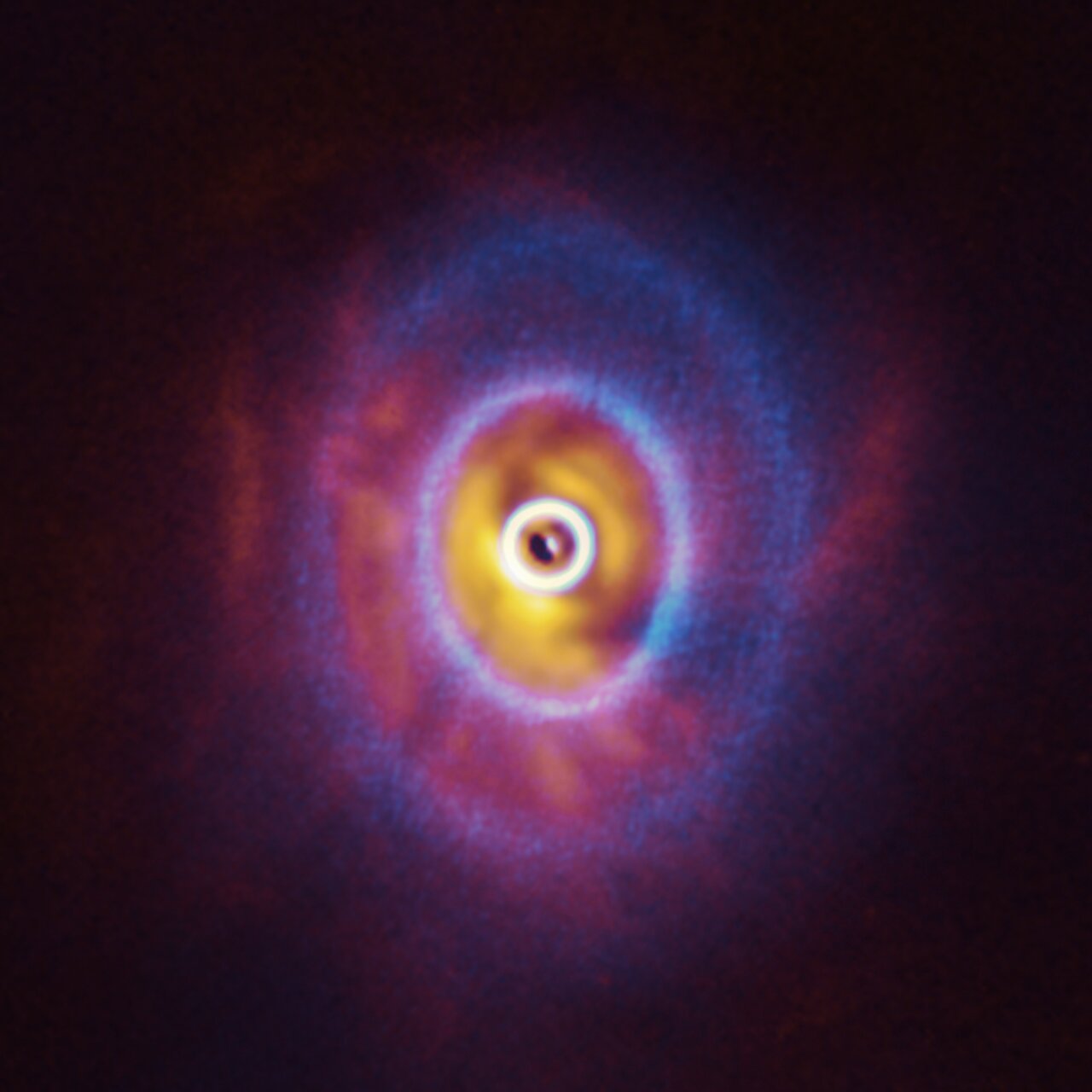GW Orionis
A protoplanetary disc surrounding three stars

I wrote this image caption in the context of an application to a science journalism internship.
Most stars – especially young stars – are in orbit with at least one companion star. GW Orionis in the constellation of Orion is actually three stars surrounded by a ring of dust and gas. This kind of ring is called a protoplanetary disc because it is the region where planets might form, and it is at least 400 times as wide as the orbit of the Earth.
Different wavelengths of light are used to see different parts of the protoplanetary disc. The biggest grains of dust emit infrared light that can be observed with ALMA (shown in blue in the image), and the smaller specks of dust emit light at submillimeter wavelengths that can be seen with the SPHERE instrument on the Very Large Telescope (shown in red). The SPHERE observations reveal that some parts of the protoplanetary disc are casting shadows on other parts of the disc, indicating that the disc is warped.
When the protoplanetary disc is not aligned with the orbit of the stars in the center, the protoplanetary disc gets warped by the gravitational influence of the stars. Even if astronomers can’t directly see the stars, they can guess where the stars are based on the structure of the protoplanetary disc.
Image credit: ESO/Exeter/Kraus et al., ALMA (ESO/NAOJ/NRAO)

